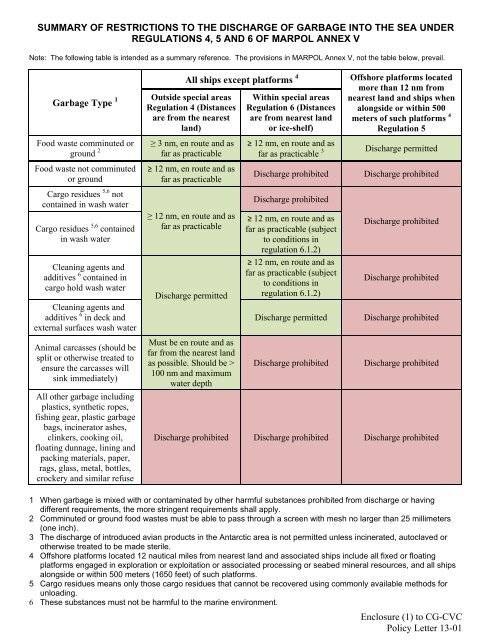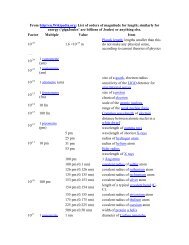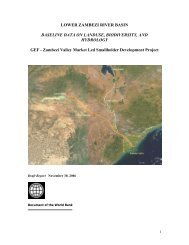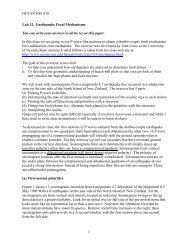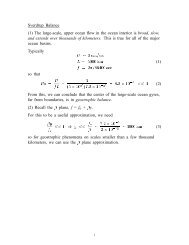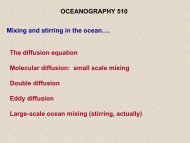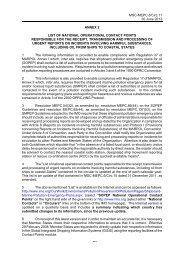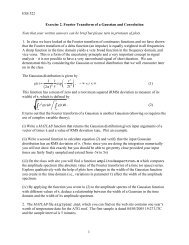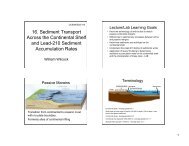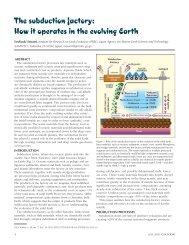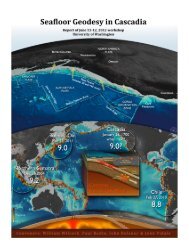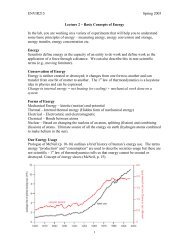USCG MARPOL Annex V Guidelines 2013 Feb
USCG MARPOL Annex V Guidelines 2013 Feb
USCG MARPOL Annex V Guidelines 2013 Feb
You also want an ePaper? Increase the reach of your titles
YUMPU automatically turns print PDFs into web optimized ePapers that Google loves.
SUMMARY OF RESTRICTIONS TO THE DISCHARGE OF GARBAGE INTO THE SEA UNDER<br />
REGULATIONS 4, 5 AND 6 OF <strong>MARPOL</strong> ANNEX V<br />
Note: The following table is intended as a summary reference. The provisions in <strong>MARPOL</strong> <strong>Annex</strong> V, not the table below, prevail.<br />
Garbage Type 1 Outside special areas Within special areas nearest land and ships when<br />
Regulation 4 (Distances Regulation 6 (Distances alongside or within 500<br />
All ships except platforms 4 Offshore platforms located<br />
more than 12 nm from<br />
are from the nearest<br />
land)<br />
are from nearest land<br />
or ice-shelf)<br />
meters of such platforms 4<br />
Regulation 5<br />
Food waste comminuted or<br />
ground 2<br />
Food waste not comminuted<br />
or ground<br />
Cargo residues 5,6 not<br />
contained in wash water<br />
Cargo residues 5,6 contained<br />
in wash water<br />
Cleaning agents and<br />
additives 6 contained in<br />
cargo hold wash water<br />
Cleaning agents and<br />
additives 6 in deck and<br />
external surfaces wash water<br />
Animal carcasses (should be<br />
split or otherwise treated to<br />
ensure the carcasses will<br />
sink immediately)<br />
All other garbage including<br />
plastics, synthetic ropes,<br />
fishing gear, plastic garbage<br />
bags, incinerator ashes,<br />
clinkers, cooking oil,<br />
floating dunnage, lining and<br />
packing materials, paper,<br />
rags, glass, metal, bottles,<br />
crockery and similar refuse<br />
≥ 3 nm, en route and as<br />
far as practicable<br />
≥ 12 nm, en route and as<br />
far as practicable<br />
≥ 12 nm, en route and as<br />
far as practicable<br />
Discharge permitted<br />
Must be en route and as<br />
far from the nearest land<br />
as possible. Should be ><br />
100 nm and maximum<br />
water depth<br />
≥ 12 nm, en route and as<br />
far as practicable 3<br />
Discharge prohibited<br />
Discharge prohibited<br />
≥ 12 nm, en route and as<br />
far as practicable (subject<br />
to conditions in<br />
regulation 6.1.2)<br />
≥ 12 nm, en route and as<br />
far as practicable (subject<br />
to conditions in<br />
regulation 6.1.2)<br />
Discharge permitted<br />
Discharge prohibited<br />
Discharge permitted<br />
Discharge prohibited<br />
Discharge prohibited<br />
Discharge prohibited<br />
Discharge prohibited<br />
Discharge prohibited<br />
Discharge prohibited Discharge prohibited Discharge prohibited<br />
1 When garbage is mixed with or contaminated by other harmful substances prohibited from discharge or having<br />
different requirements, the more stringent requirements shall apply.<br />
2 Comminuted or ground food wastes must be able to pass through a screen with mesh no larger than 25 millimeters<br />
(one inch).<br />
3 The discharge of introduced avian products in the Antarctic area is not permitted unless incinerated, autoclaved or<br />
otherwise treated to be made sterile.<br />
4 Offshore platforms located 12 nautical miles from nearest land and associated ships include all fixed or floating<br />
platforms engaged in exploration or exploitation or associated processing or seabed mineral resources, and all ships<br />
alongside or within 500 meters (1650 feet) of such platforms.<br />
5 Cargo residues means only those cargo residues that cannot be recovered using commonly available methods for<br />
unloading.<br />
6 These substances must not be harmful to the marine environment.<br />
Enclosure (1) to CG-CVC<br />
Policy Letter 13-01


